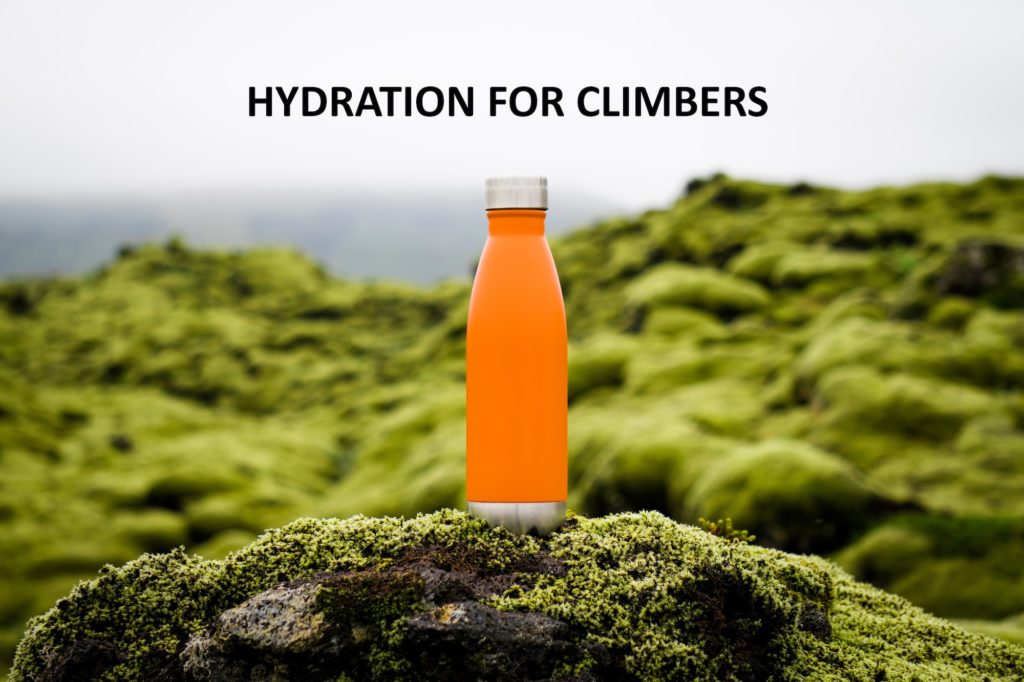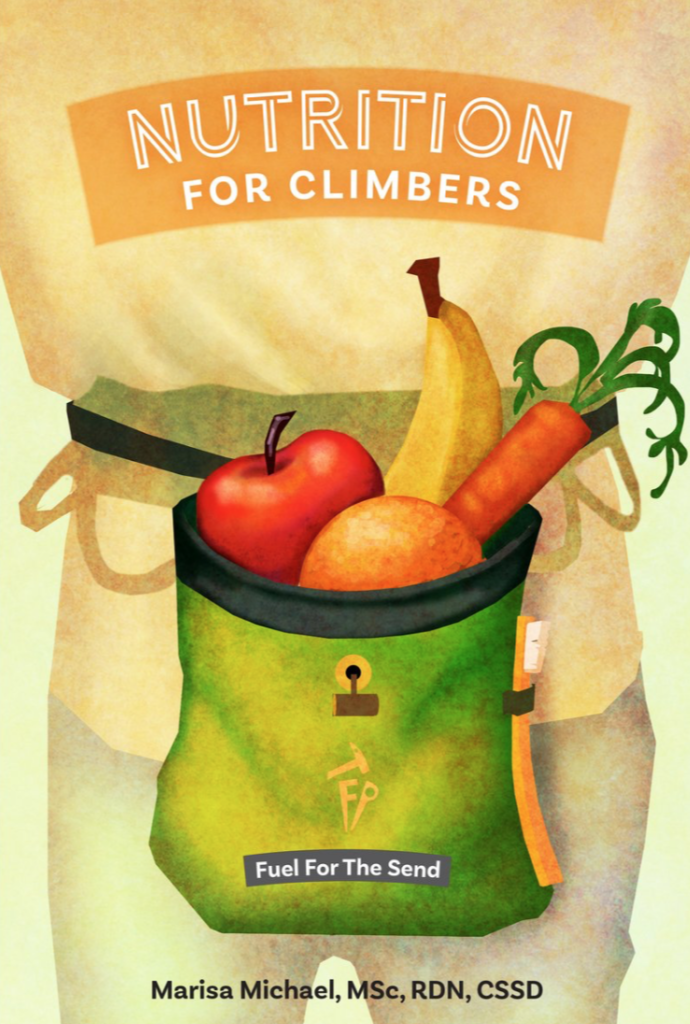
Hydration is important for climbing performance
Climbing is as much about having a brain as it is about having a bicep. A fluid loss of >2% of your body weight can impair thinking hindering your brain’s ability to keep it together . We can all think back to a time where we lost our cool on a climb and coped by yelling at our belayer. (You mean you haven’t done that? Just me? Oh…)
How do you prevent dehydration when climbing so you can stay mentally sharp and safe?
At minimum, drink eight ounces (1 cup, ~240 milliliters) of water per hour while climbing. Extreme temperatures, your rate of sweat loss, elevation and the level of activity can all influence your total fluid needs. More extreme conditions mean you need more fluid.
Should I use electrolytes?
Hydration is more than just replenishing fluid loss. When we sweat our body loses sodium, magnesium, potassium, calcium and chloride in addition to water. These are essential for proper fluid balance. Your body relies on electrolytes for important functions like blood pressure regulation and muscle contraction – this includes your heart.
Sports drinks typically have electrolytes already in them, hence the name electrolyte sports drink! A quick skim of the nutrition label can confirm that sodium, potassium and others are present. Coconut water is commonly treated as the rehydration fluid, but coconut water is too low in sodium to rehydrate you properly.
We lose more sodium in our sweat than any other electrolyte. The low sodium content of coconut water may not recoup your salt losses. Although a delicious beverage, it might not be an ideal recovery drink.
Plain ol’ water is great, but if fluid losses are excessive you need to add salt. Too much water without enough salt could have negative effects on the body ranging from dizziness to severe heart complications. If your clothes have white salt stains after they’ve dried, this could indicate you are losing a boat load of salt in your sweat .
Proper hydration is a skill. Hydration has to be a component of your day, not something you do after the fact when your lips are chapped and you would kill for a glass of water.
How much should I drink?
Before you head out, aim to drink 10-20 ounces an hour depending on your body weight. Add salt to your eggs, potatoes, salad, sandwich, etc to boost your sodium intake.
- 100 pounds: 10 ounces every hour with sodium
- 150 pounds: 15 ounces every hour with sodium
- 200 pounds: 20 ounces every hour with sodium
During exercise your fluid intake is dependent on your sweat losses. It may be worth weighing yourself some time to see on average how much water loss you experience during an hour of activity. Remember extreme heat, altitude and other factors could exacerbate losses. A very general rule of thumb:
- 8-20 ounces an hour
- Consider marking your water bottle every 8 ounces so you have a quick visual of whether or not you have met your fluid mark
After exercise replenish sweat losses: 16-24 ounces for every pound lost.
- Divide that amount out over time, so you aren’t chugging 32 ounces in a sitting. That sounds terrible. Eight to 20 ounces an hour is manageable, more than that might lead you to feel nauseated or full. Too much of a good thing, isn’t a good thing. When you can’t properly fuel your body because you are overflowing with fluids you could wind up energy deficient.
The wrap up
Drink fluids my friends. Add salt to your food if you aren’t a fan of electrolyte sports drinks. Take a peek at a nutritional label of your favorite rehydration formula to ensure there are adequate levels of sodium present. We lose more sodium than anything else through sweating and sodium is an important molecule in our bodies! If you struggle to drink enough water, label a water bottle every 8 ounces and drink down at least one line per hour. Always have your water bottle within your line of sight. These strategies can help to make sure you drink enough to hydrate your body and mind.
~This article written by Kaila Dickey
Thomas T, Erdman K, Burke L. Position of the Academy of Nutrition and Dietetics, Dietitians of Canada, and the American College of Sports Medicine: Nutrition and Athletic Performance. JAND. 2016; (116)3: 501-528. doi: 10.1016/j.jand.2015.12.006

Want to learn more? Check out our on-demand masterclass Nutrition for Climbers, or our book Nutrition for Climbers: Fuel for the Send.
